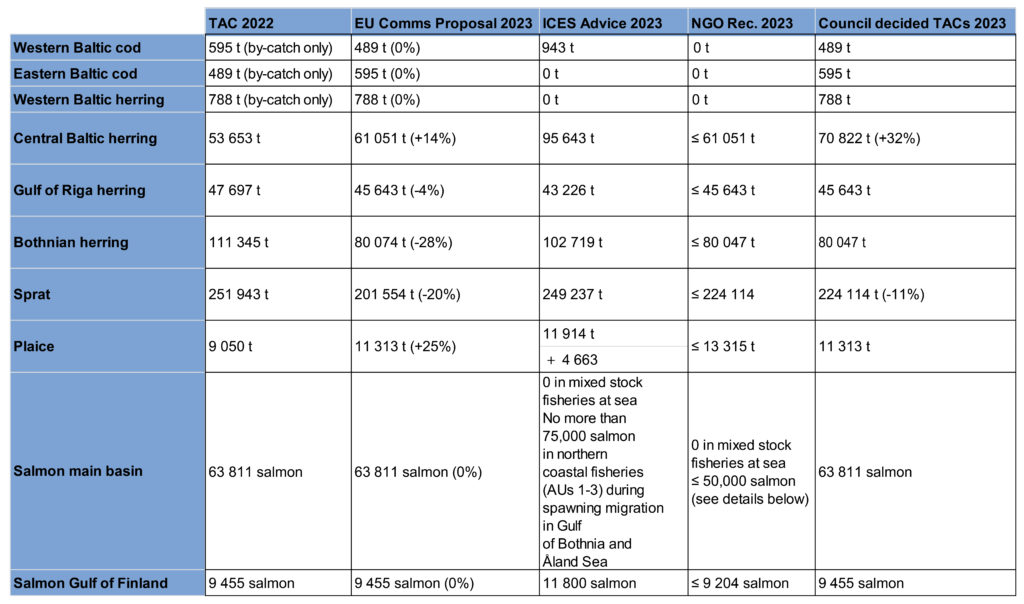Earlier this week, the EU Fisheries Ministers decided the fishing opportunities for the Baltic Sea in 2023. It was an unusually swift decision, announced shortly after lunch. For most of the fish stocks, the outcome of the negotiations followed the Commission’s proposal, except for sprat with a lesser decreased than proposed, and for the central Baltic herring where the council raised the TAC with 32%, far more than the precautionary proposal from the commission.
For the two cod stocks, the ban on any targeted fishing remains. For the Eastern Baltic cod, a bycatch quota of 595 tonnes was agreed. The International Council for Exploration of the Sea (ICES) advised zero catch for this vulnerable cod stock, but both the Commission and the Council proposed a roll-over from last year. Also, for the Western Baltic cod a roll-over bycatch quota of 489 tonnes was agreed. This applies to both commercial and recreational catches. In this case, both the Commission and the Council adhered to the scientific advice, based on the precautionary principle and high uncertainties in the ICES predictions, to safeguard the stock by setting a TAC below the ICES advice. A wise, and necessary, step towards the rebuilding of the Western Baltic cod.
For the herring stocks, the quota for Bothnian herring was reduced by 28 % compared to last year, following the Commission’s proposal, with a TAC of 80,047 tonnes corresponding to Flower. This can also be considered a precautionary move, but keeping the dire situation of coastal fishermen literally unable to catch any large herring in mind, will this be enough? Considering the crucial importance of herring in the Baltic ecosystem, recently discussed in this paper, there are concerns about all the Baltic stocks. Of particular concern is the Central Baltic herring, where the TAC was increased by 32 % to 70,822 tonnes. This is a sharp increase from the Commission’s proposal of a precautionary 14% increase. However, the ICES advice on fishing opportunities was even higher, so the outcome is still aligned with, and more precautionary than, the scientific advice. Nevertheless, the advice is based on only one strong year class and ICES also note uncertainties in the assessment of the stock, and raise concern of the misreporting between sprat and herring. Researchers as well as coastal fishermen have expressed worries of the lack of herring in the coastal communities, so this increase is a decision of high risk and uncertainty. For the Gulf of Riga herring, the one herring stock well managed and in good health, the TAC was decreased slightly by 4 %. The Western spring spawning herring, for which a zero catch has been advised for several years, a roll-over by-catch quota of 788 tonnes was agreed.
For sprat, the Commission had proposed a 20 % decrease in catch but this was reduced in the Council to a smaller decrease of 11 %, to a TAC of 224,114 tonnes. The Commission’s rationale for lowering the sprat quota was the importance of sprat as a forage fish for cod, as stated by ICES. Despite being less precautionary, the agreed TAC for sprat is still lower than the ICES advice. For plaice, a TAC increase of 25 % was set, which raise concerns since cod is a bycatch species in the flatfish fisheries. In this case, mandatory use of selective gears and Remote Electronic Monitoring could help reduce bycatch – but this has not been prescribed. Lastly, the salmon TAC was a roll-over from last year, as proposed by the Commission. The new management considerations for salmon is a major step forward to protect weak salmon populations, where additional management considerations is added in the agreement.
